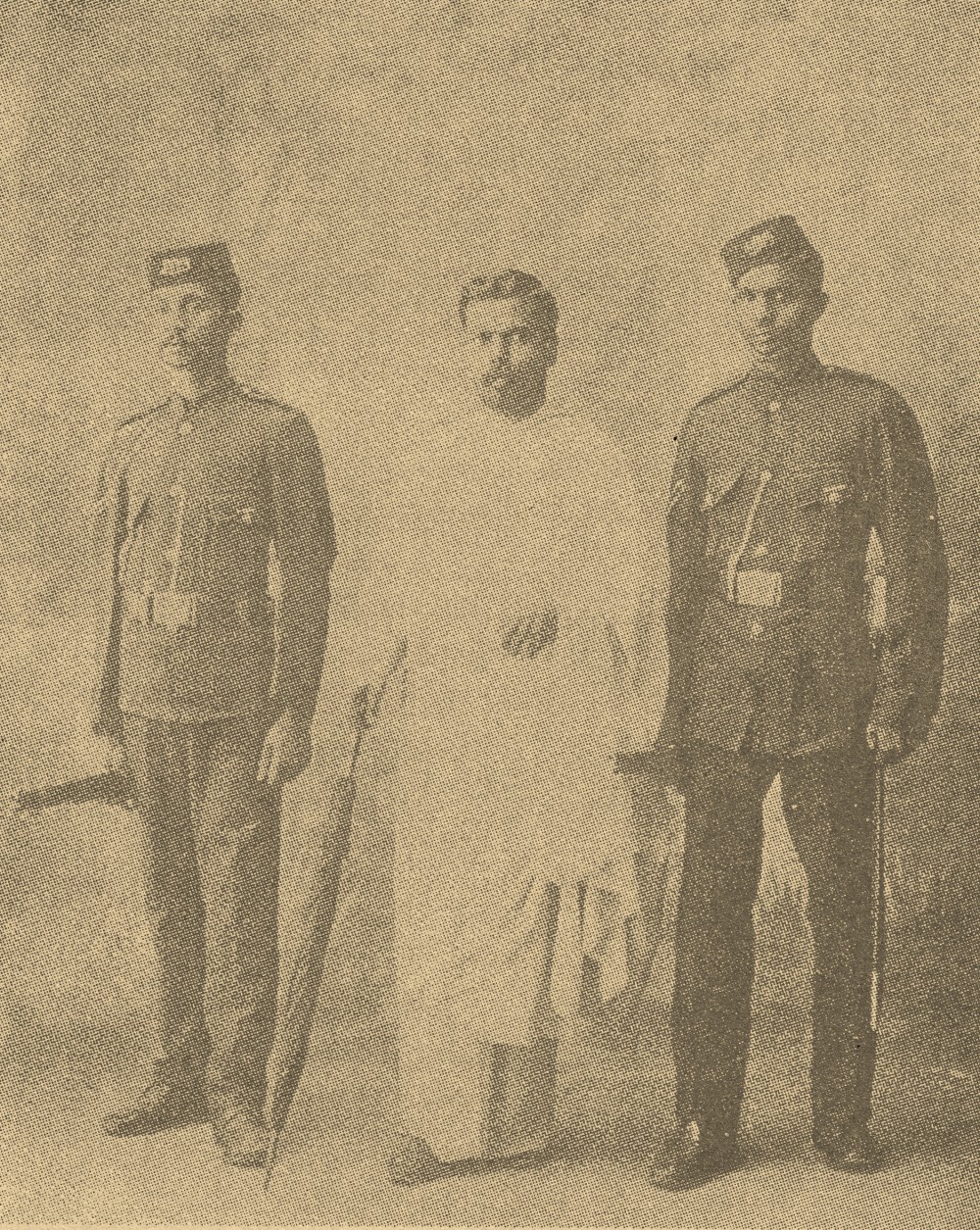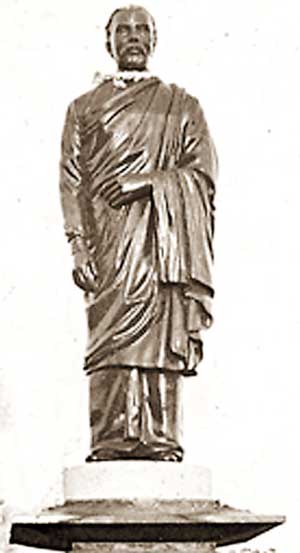
Brahmachari Walisinghe Harischandra was more than just another name in Sri Lankan history. He was a force of passion and purpose. Born as Edward de Silva, he went on to become one of the most significant figures in the Buddhist revival movement and a fierce protector of Sri Lankan cultural heritage. At a time when Western influences threatened to overshadow local traditions, Harischandra dedicated his life to Buddhism and nationalism, preserving the very roots of Sri Lankan identity.
His efforts weren’t limited to spiritual teachings; he fought tirelessly to safeguard the sanctity of sacred sites like Anuradhapura, playing a key role in their resurgence. So, let me tell you a bit more about this legend.
Early Life and Education of Edward de Silva
Brahmachari Walisinghe Harischandra, originally born as Edward de Silva, on July 9, 1876, in the coastal town of Negombo, Sri Lanka. His parents, Walisinghe Hendrick de Silva and Pehandi Marthnanda de Silva Gunasekera came from a respectable family rooted in local traditions. Growing up in a household where culture and heritage mattered, Edward was immersed in a sense of responsibility early on.
Buddhist teachings shaped young Edward’s education. His first lessons came from a Buddhist scholar-monk, a unique beginning that sowed the seeds of his later dedication to Buddhism. But as he grew older, his path shifted toward formal schooling. He attended St. Mary’s College in Negombo. Soon after, he moved to Colombo, where he continued his studies under the guidance of his uncle, who was a lawyer. His influence on young Edward led to his passion for law later in his life.
In 1889, he enrolled at Wesley College, Colombo, where he studied for six years. It was here that Edward honed his skills in English, which would later serve him well in his writing and public speaking.
After that, he pursued legal studies at Law College, following in his uncle’s footsteps and preparing for what seemed like a promising legal career.
The Shift Towards Buddhism and Nationalism
While pursuing his law studies, Edward de Silva caught his attention in Buddhism. It wasn’t a sharp shift but a growing interest that gradually took over. The more he studied, the more he realized that Buddhism resonated deeply with his beliefs and sense of purpose.
With this newfound passion, he decided to change his name to E. de S. Walisinghe; at the same time, he began teaching at Ananda College’s Sunday Dhamma school.
Realizing that the legal world was no longer his calling, Walisinghe took the bold decision to fully abandon his legal career altogether. Following this momentous decision, he adopted the name Walisinghe Harischandra.
From that point on, he chose to live as a Brahmacharya, a life dedicated to celibacy and service. It wasn’t just a religious commitment but also a personal vow to fully immerse himself in the causes that mattered to him.
- Brahmachari After taken into the Police Custody By the Britishers in 1903.
- Walisingha-Harischandra-tribute-stamp-May-1986
- Walisingha-Harischandra-tribute-statue
Walisinghe Harischandra – Contributions to the Mahabodhi Society
Walisinghe Harischandra’s journey took a significant turn when he joined the Mahabodhi Society, founded by the famous Buddhist revivalist Anagarika Dharmapala. The Mahabodhi Society was dedicated to promoting Buddhism globally and restoring ancient Buddhist sites, which aligned perfectly with Harischandra’s spiritual and nationalistic ambitions. He started his role as the Assistant Secretary. His hard work and commitment led to his promotion to Secretary.
As part of the Mahabodhi Society, Harischandra contributed by assisting in constructing the Maha Bodhi Vihara in Sanchi, India. Perhaps even more significant was his contribution to the ‘Save Buddhagaya’ campaign, an initiative to reclaim the site where Buddha attained enlightenment.
Work in the Temperance Movement
Walisinghe Harischandra’s role in the Temperance Movement showcased his ability to lead and inspire through public speaking. He quickly became one of the most prominent voices in the fight against alcohol consumption, a pressing issue in Sri Lanka during that time. The Temperance Movement was more than just a campaign to limit alcohol use; it was tied deeply to the broader effort of cultural preservation and national pride.
His speeches touched on Buddhist values, self-discipline, and the importance of protecting the country’s cultural identity from the detrimental effects of alcohol. Harischandra’s oratory wasn’t mere rhetoric; it was a call to action, urging Sri Lankans to break free from the harmful colonial influences that threatened their way of life. His leadership in the Temperance Movement was a hands-on leader, participating in organizing meetings, rallies, and creating strategies to push the movement forward.
Walisinghe Harischandra Becomes the Editor of Mahabodhi
Harischandra also took up the important role of editing the magazine Mahabodhi. This publication served as a platform to educate people about Buddhist principles and encourage them to reflect on the cultural heritage of Sri Lanka. Under his editorial guidance, Mahabodhi became a tool for cultural restoration and a beacon of nationalistic pride.
His editorial work focused on addressing the critical issues of the time, from the moral and ethical implications of alcohol use to the importance of protecting sacred Buddhist sites. Harischandra used his position as editor to spread messages of temperance, self-discipline, and spiritual awakening across the country. He understood the power of the written word and harnessed it to inspire not only his contemporaries but also future generations.

Preserving Sacred Sites and Historical Contributions
Walisinghe Harischandra’s deep-rooted commitment to Buddhism and Sri Lanka’s cultural heritage became particularly evident in his efforts to preserve the sanctity of Anuradhapura, one of the most sacred and historical cities in the country.
Harischandra was instrumental in turning Anuradhapura into an officially recognized sacred city and ensuring its reverence.
One of his major initiatives was the founding of the Ruwanweli Dagoba Improvement Society. The Ruwanweli Dagoba, an iconic Buddhist stupa, had fallen into disrepair, and Harischandra couldn’t stand by while such an important monument was being neglected. Through this society, he campaigned for the restoration of not just the Ruwanweli Dagaba but also other vital shrines in the city. His efforts weren’t limited to simply raising funds; he organized restoration projects, brought attention to these sacred sites, and inspired many to join his cause.
One of the biggest battles Harischandra fought was against the desecration of these sacred shrines. In his time, many Buddhist sites, particularly in Anuradhapura, were surrounded by meat stalls and liquor bars, activities that blatantly disrespected the spiritual importance of the area. To Harischandra, this wasn’t just an insult to Buddhism; it was a sign of the ongoing cultural erosion under colonial rule. He knew that if nothing were done, these sacred sites would lose their spiritual essence and be replaced by commercialism and disregard.
Harischandra’s approach was proactive and far-reaching. He penned The Sacred City of Anuradhapura, a publication that not only documented the historical significance of the city but also highlighted the issues that were threatening its sanctity. Harischandra took his fight to the British monarchy, sending a copy to King George V and petitioning for the protection of the religious sites. His campaign paid off, as it drew the attention of both local and international authorities to the need to safeguard Anuradhapura’s sacred status.
Death and Legacy
On September 13, 1913, at the young age of 37, he passed away after a brief illness. His death was a significant loss for Sri Lanka, but his contributions had already secured his place in the nation’s history. Even today, Harischandra is remembered as a national hero and someone who gave up a promising legal career to follow a path of religious devotion and nationalistic activism.
Walisinghe Harischandra was not only a key figure in restoring Buddhist sites, but he was also a prolific writer whose works continue to inspire. His passion for history and Buddhism flowed into his many publications. His book, Description of the Sacred City of Anuradhapura, served as a guide to the city’s ruins but also as a call to protect and cherish these sacred spaces.
Another of his notable works, the Great Story of King Dutugemunu, celebrated one of Sri Lanka’s most revered kings, blending history with Buddhist values to inspire national pride. Harischandra’s writings were filled with his passion for preserving both the cultural and spiritual heart of Sri Lanka.
His other books, Life of King Devanampiyatissa and The Significance of Jaya Sri Maha Bodhi, left behind a blueprint for understanding and valuing the country’s deep-rooted history.
Walisinghe Harischandra’s legacy is a reminder that one person’s dedication can impact an entire nation. He lived with a deep sense of purpose, always striving to protect what he held dear, leaving behind a body of work and a lifetime of efforts that continue to resonate across Sri Lanka’s cultural landscape. His diary entry, “The best die young,” sums up the man he was—an unrelenting force of good who, though gone too soon, left an indelible mark on the country’s heart.
A Life Devoted to Sri Lanka’s Heritage
The story of Walisinghe Harischandra is one of deep dedication and unwavering commitment to preserving the sacred traditions of Sri Lanka. He wasn’t just a scholar or an activist; he embodied the spirit of a true patriot. From a young law student fascinated by Buddhism to a national figure who fought for the protection of Anuradhapura’s sacred sites, Harischandra carved a path of relentless service. His choice to live as a Brahmacharya reflected his desire to place the well-being of the nation above personal gain and his devotion to the Buddhist revivalist movement left an enduring mark on Sri Lanka’s cultural landscape.
His efforts with the Mahabodhi Society and the Temperance Movement cemented his role as a leader, not just in religious circles but also within nationalistic causes. Through oratory and writing, he inspired many to respect the heritage that Sri Lanka had to offer. The many books he authored, ranging from histories of ancient kings to explorations of sacred cities, continue to serve as guides for preserving cultural memory. Harischandra’s untimely death at 37 may have been a tragic loss, but his legacy continues to thrive, reminding future generations that a life lived in service to one’s country and its values is one of true greatness.
To visit the Harischandra Museum or reflect on his life is to witness the power of personal sacrifice and national pride. His story challenges us all to ask: how can we contribute to something greater than ourselves?



